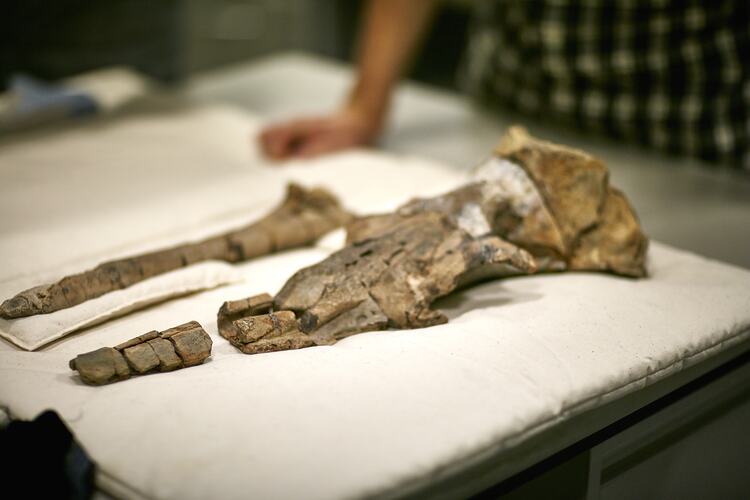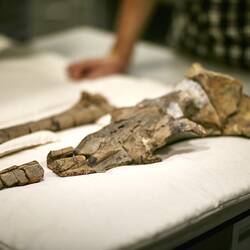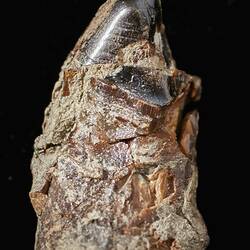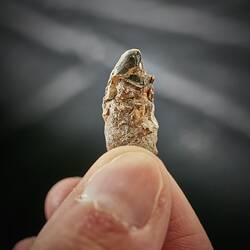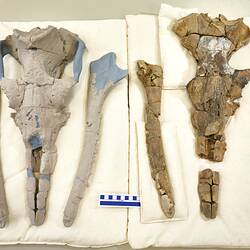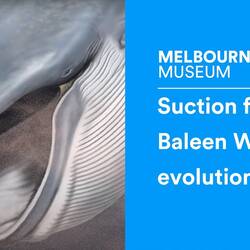Summary
Nick-named 'Alfred', this fossil skull is from an extinct group of whales called aetiocetids, which despite having teeth were an early branch of the baleen whale family tree. Alfred's teeth show exceptionally rare evidence of feeding behaviour suggesting an entirely new evolutionary scenario - before losing teeth and evolving baleen, these whales used suction to catch prey.
Today's baleen whales - such as the Blue and Humpback - don't have teeth. Instead they have evolved a hair-like structure called baleen that allows them to filter huge amounts of tiny plankton, like krill, from seawater. Filter-feeding is the key to the baleen whales' evolutionary success. The question that had eluded scientists was exactly how whales made the complex evolutionary change from biting prey with teeth to filtering plankton using baleen. 'Alfred' held the vital never-before-seen evidence of feeding behaviour: tiny horizontal scratches on the inner surface of Alfred's teeth.
Specimen Details
-
Taxon Name
-
Identified By
Dr Felix G. Marx - Monash University
-
Number Of Specimens
1
-
Date Collected From
/05/2004
-
Category
-
Scientific Group
-
Discipline
-
Collecting Areas
-
Type of Item
Taxonomy
-
Kingdom
-
Phylum
-
Subphylum
-
Class
-
Subclass
-
Order
-
Suborder
-
Family
Geospatial Information
-
Continent
-
Country
-
State
-
District
-
Era
Cenozoic
-
Period
Paleogene
-
Epoch
Oligocene
-
Geological formation
Pysht Formation
